Top 13 Interesting Facts about Demeter
Greek deities have long been a source of fascination and inquiry. Greek deities are filled with mysteries in their birth, knowledge, contributions, and life ... read more...histories. One of the six main Olympian goddesses was Demeter, the goddess of the harvest. She was born to Rhea and Cronus, but her father, Cronus, ate her up. She was able to release herself as well as her other siblings, who had been enlarged by their father. As the goddess of grain, Earth, and humanity, she went on to become one of the most revered and important people. Since her birth, Demeter's life has been a mystery and a thrilling adventure. Here are some of the most interesting facts about Demeter.
-
One of the most interesting facts about Demeter is she is the goddess of harvest and agriculture in ancient Greek mythology and myth, ruling over grains and in charge of the earth's fertility. Demeter was revered as a "corn-mother," the goddess of grains who bestows blessings on those who harvest them and gives grain for bread. Demeter is frequently seen with bundles of grain and poppies since she is a goddess of agriculture. The Greek terms da ("earth") and meter ("mother") are related to the name Demeter. As a result, it translates as "earth goddess," which is compatible with her role as a goddess of agriculture and harvest.
Every member of Olympia was supposed to adore and abide by her as the goddess of the sacred law. All around Greece, temples were constructed in her honor. On the island of Naxos, Demeter was honored with a temple that the Greeks built outside of the Sangri hamlet. Around the sixth century BC, the Temple of Demeter was constructed; later, a church took its place. They revered, praised, and exalted her for preserving the fertility of the entire planet and serving as its protector. She would, however, starve the entire planet in a fit of rage.
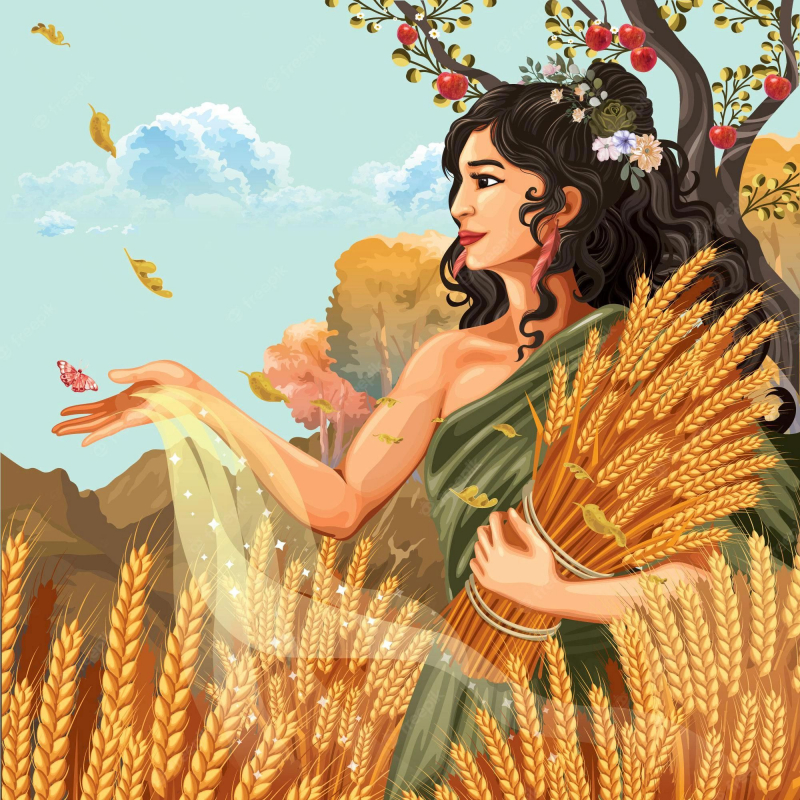
Photo: https://www.freepik.com/ 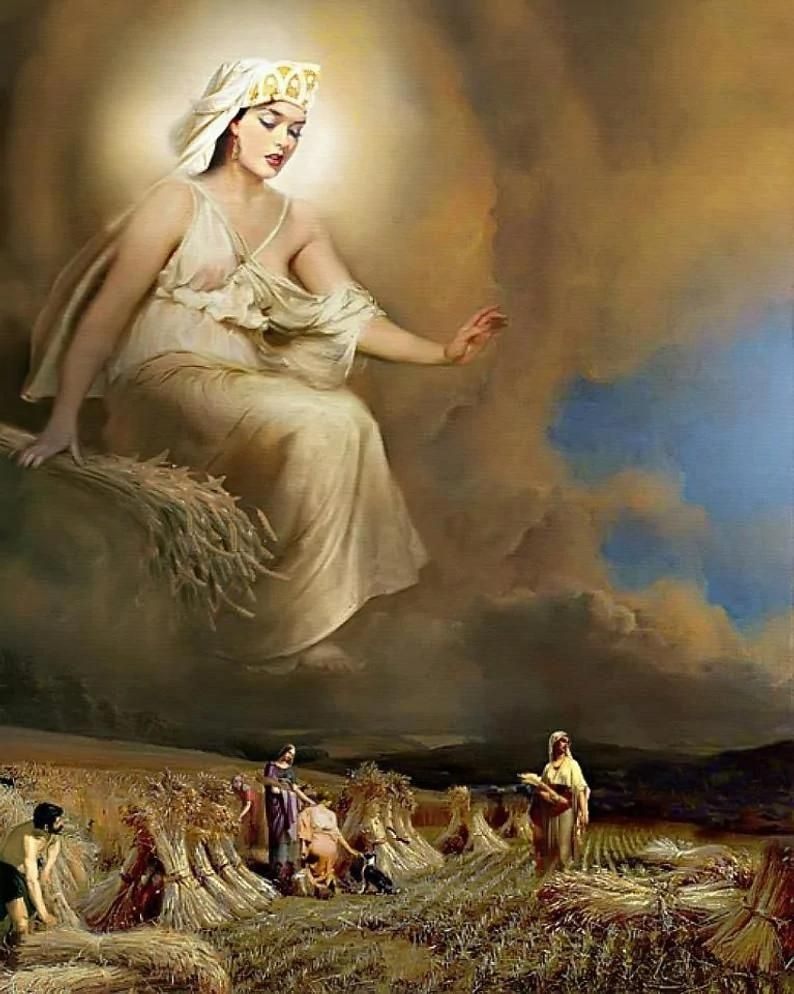
Photo: https://dreamsandmythology.com/ -
Demeter was revered as the goddess of the Earth and the underworld in addition to being associated with agriculture and the harvest. Demeter was compared to the underworld gift-sender Anesidora in the Flea cult. Demeter was pictured as a goddess with two snakes, holding a dolphin in one hand and a dove in the other in Arcadia, one of Greece's regional regions. This portrayal is primarily used to show her control over the underworld, the air, and the sea.
Ancient Greek farmers believed that a new life always emerges from the remains of a deceased person, much as a new plant does from buried seeds. The deceased was referred to as "Demetrioi" by the Athenians in the context of this agrarian worldview. Demeter was also referred to as Demeter-Chthonia in the Spartan city. Chthonia refers to gods or spirits associated with the underworld in the religion of the ancient Greeks. Demeter was known as both the underworld goddess and the Khrysaoros, also known as the Lady of the Golden Blade. After using the golden sickle or sword, she earned the moniker "golden blade lady."
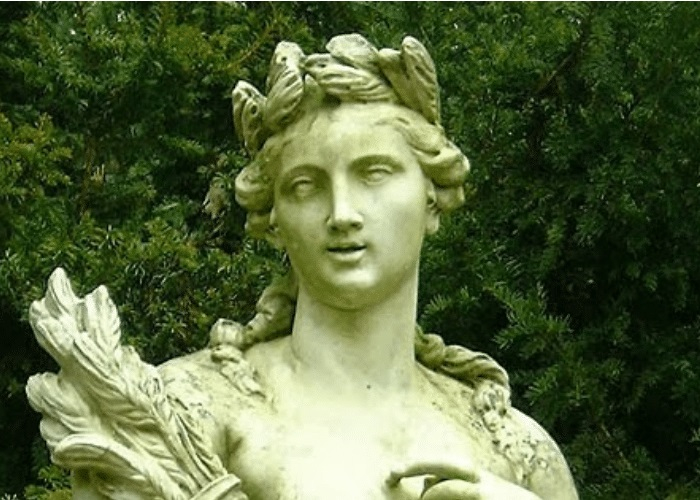
Photo: https://mythologysource.com/ 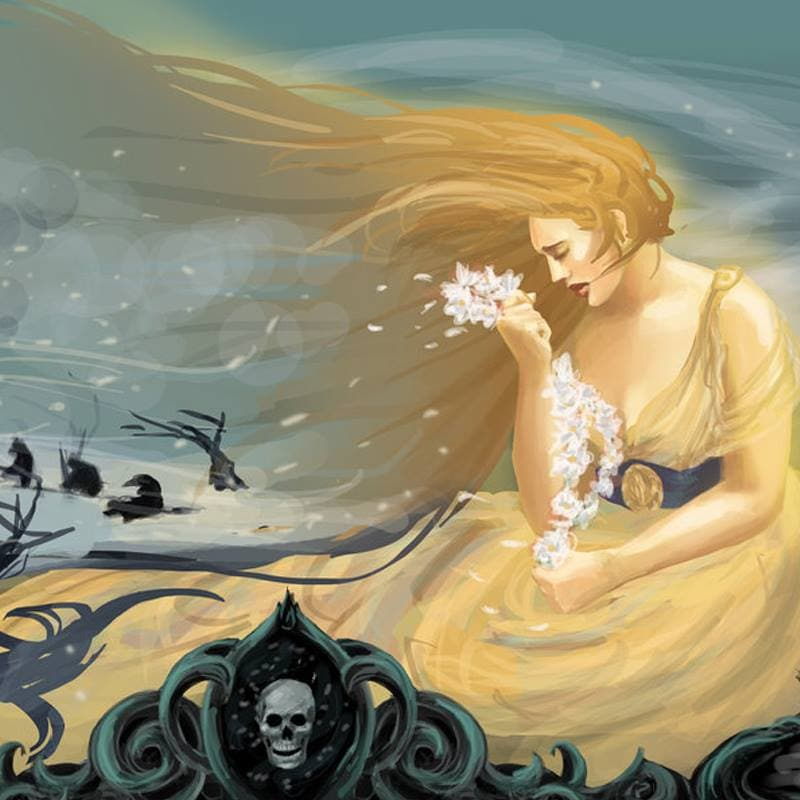
Photo: https://mythologysource.com/ -
The goddess Demeter is revered as being attractive in classical Greek mythology. She was represented as a wise woman who frequently wore a crown and sat on a throne. She is typically depicted with elaborate clothing, long red hair that was typically pulled back into a bun, and a veil covering her head. Although most representations of Diana in art feature black, curly hair, she is depicted as having blonde hair in Homer's epic Odyssey.
In a Homeric hymn, Demeter is depicted as having "golden locks falling over her shoulders," "a light blazing afar" from her glorious figure, "beauty spreading round her," and producing "a wonderful scent." Demeter is frequently seen with a toga, which is a recognizable garment from ancient Rome. It was a piece of cloth that was roughly semicircular and was wrapped around the torso. A cornucopia is a big produce-filled horn-shaped container. It was a proverbial representation of nutrition and wealth. Demeter is frequently shown with a cornucopia because she is a goddess of agriculture.
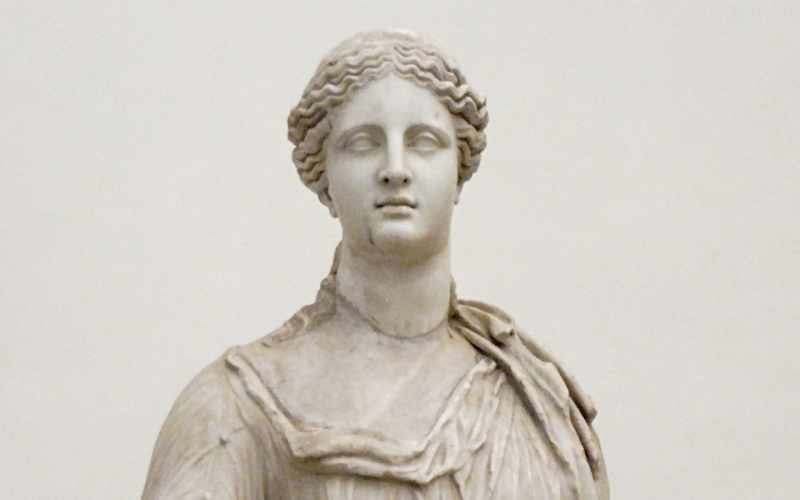
Photo: https://mythopedia.com/ 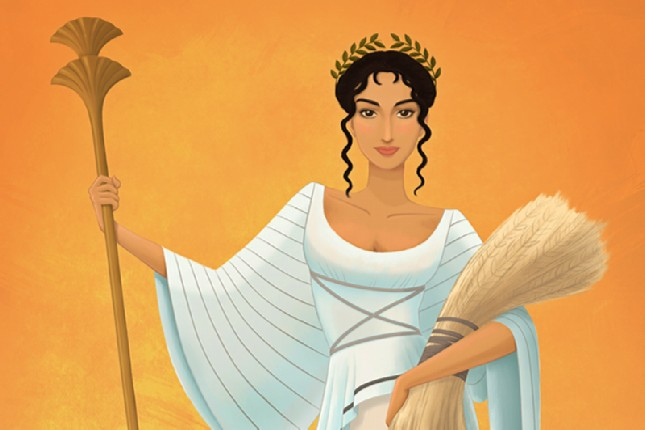
Photo: https://www.the-travel-insiders.com/ -
One of the twelve Olympian Gods is Demeter, which is one of the most interesting facts about Demeter. A race of immortal gods in their third or fourth generation is known as the Olympians. They sit atop Mount Olympus and were revered as the main deities of the Greek pantheon. After a 10-year battle known as the Titanomachy, the Olympians succeeded in becoming supreme deities.
Zeus, Demeter's brother, led his siblings in this conflict to success over the Titans, who were the reigning deities at the time. Even while Mount Olympus is home to many immortals, just 12 are regarded as being very significant. Along with Zeus' primary offspring Athena, Apollo, Artemis, Ares, Hephaestus, Hermes, Dionysus, and Aphrodite, these also include the Titans Cronus and Rhea's children Zeus, Hera, Poseidon, Demeter, and Hestia. Demeter was one of the 12 Olympian Gods and was prominent since she was Zeus' sister.
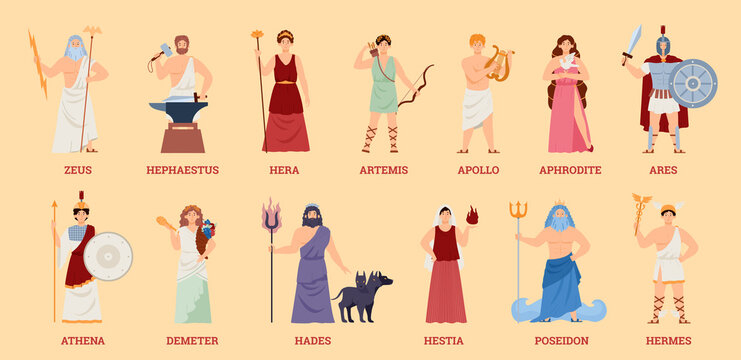
Photo: https://stock.adobe.com/ 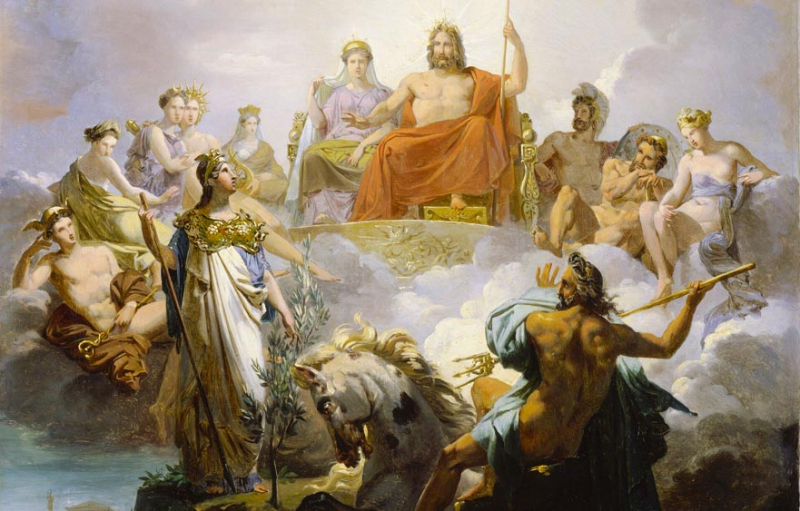
Photo: https://memolands.com/ -
Greek mythology states that Cronus ousted his father Uranus and established global control alongside his wife Rhea. He was informed, nevertheless, that one of his offspring would eventually topple him just as he had done with his father. Demeter was one of the many kids Cronus had with Rhea, but he devoured the entire birthing class. But when Rhea gave birth to her sixth child, Zeus, she concealed him in a cave and gave Cronus a stone that he swallowed. When Zeus reached adulthood, he impersonated an Olympian cupbearer, poisoned his father's wine, and then deceived him into drinking it.
As a result, Zeus' brothers Hades and Poseidon, as well as his sisters Hestia, Demeter, and Hera, were disgorged by Cronus. Zeus then engaged in combat with Cronus and the other Titans in the Titanomachy alongside his siblings, the Hecatonchires and the Cyclopes. He won the battle and deposed Cronus. Persephone was born as a result of Demeter's later affair with her brother Zeus.
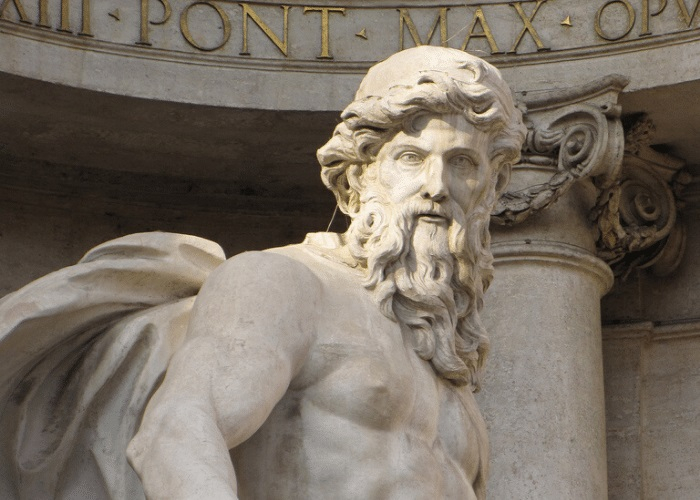
Uranus - Photo: https://mythologysource.com/ 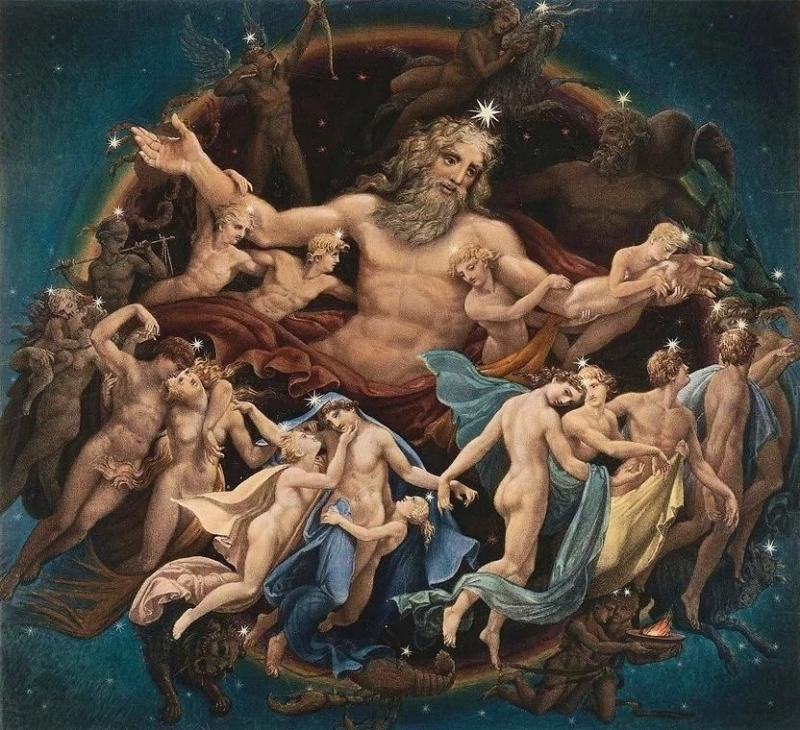
Photo: https://cdn.shortpixel.ai/ -
Persephone, the daughter of Demeter, subsequently rose to power as the ruler of the underworld. When Persephone was having fun with her nymph friends, the underworld god Hades kidnapped her. Demeter was enraged at the episode, but she was unaware that her husband Zeus had authorized Hades to act in such a manner. Demeter started looking all over the world for her daughter but was unsuccessful. She had neglected to look after herself because she was so anxious to find her daughter. Hecate, the goddess of the Moon and witchcraft, contacted Demeter after observing her distress. She admitted to Demeter that she had heard Persephone's cries but had no knowledge of the kidnapper.
Knowing this, Demeter hurried to Helios (the Sun), who informed everyone that Zeus had authorized Hades to take Persephone forcibly to the underworld. Demeter was so furious after learning the truth that she decided to postpone going back to Mount Olympus until she had her daughter back. She started out residing among mortals on earth.
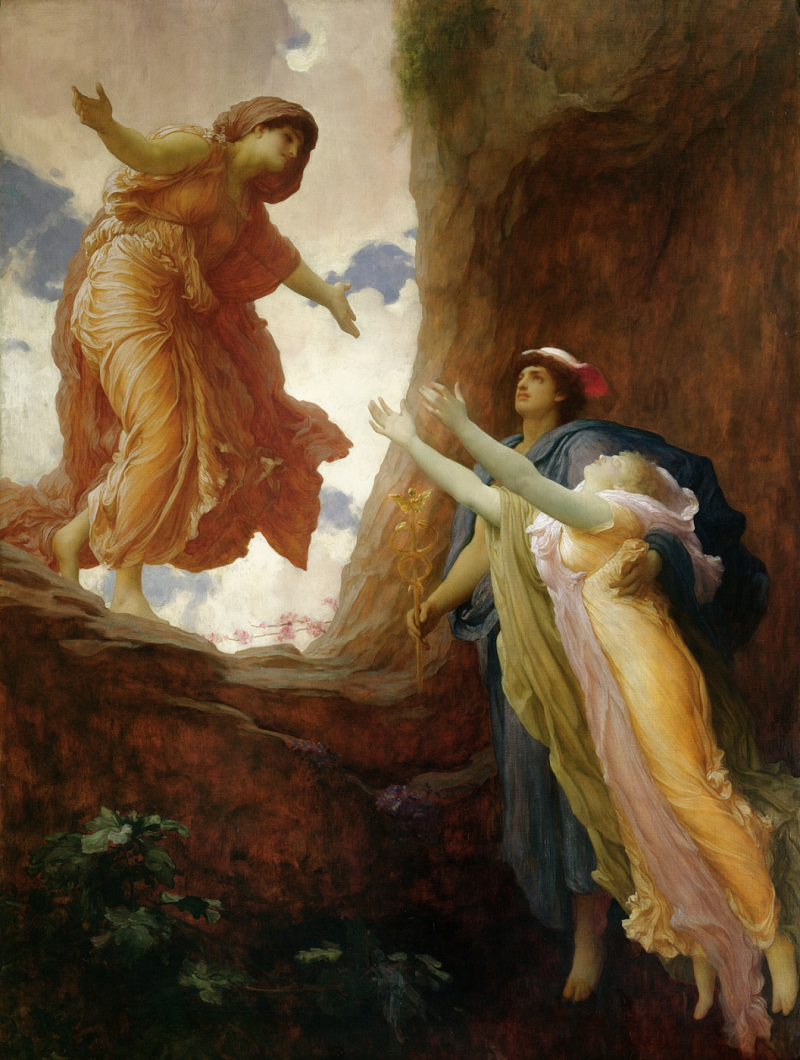
Photo: https://pt.m.wikipedia.org/ 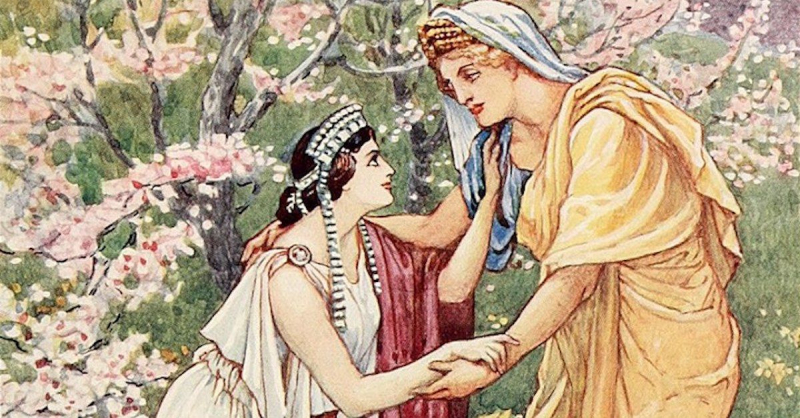
Photo: https://www.zocalopublicsquare.org/ -
Demeter wanted to hide from everyone after becoming enraged at Hades and Poseidon for harming her daughter and herself. She then put on black clothing and went into an off-limits cave. Due to Demeter's intense fury, there were numerous famines on Earth. Food production ceased as a result of the crops starting to perish. As a result of the lack of food, both humans and animals started to perish.
When everyone including the gods knew that Demeter wasn't around, they all made valiant attempts to find her but in vain. Demeter was hiding there, nevertheless, when Pan (the God of the Wilderness) wandered around the cave. He told Zeus about the discovery right away.
Zeus asked Hades to bring Persephone back to Earth so she may see her mother. He asked Hades to give Persephone back to Demeter, and Hades agreed. Hades offered Persephone a pomegranate to eat as she prepared to leave. She consumed pomegranate, which forced her to spend one-third of the year with Hade. Demeter returned to Mount Olympus after giving birth to her daughter at Zeus' request, and she did so by removing the effects of starvation from the planet. Fruits and crops so began to grow and blossom once more.
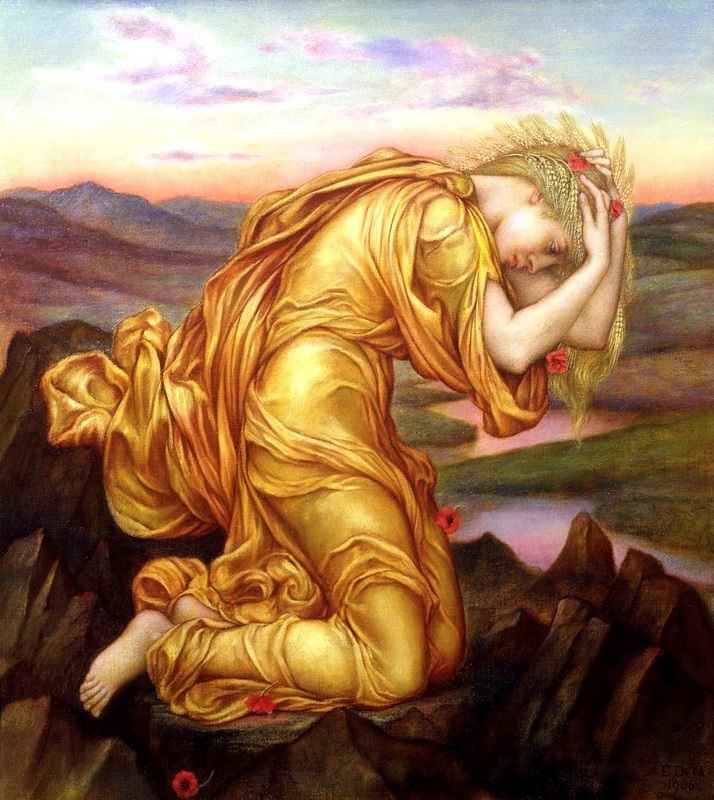
Photo: https://www.greeklegendsandmyths.com/ 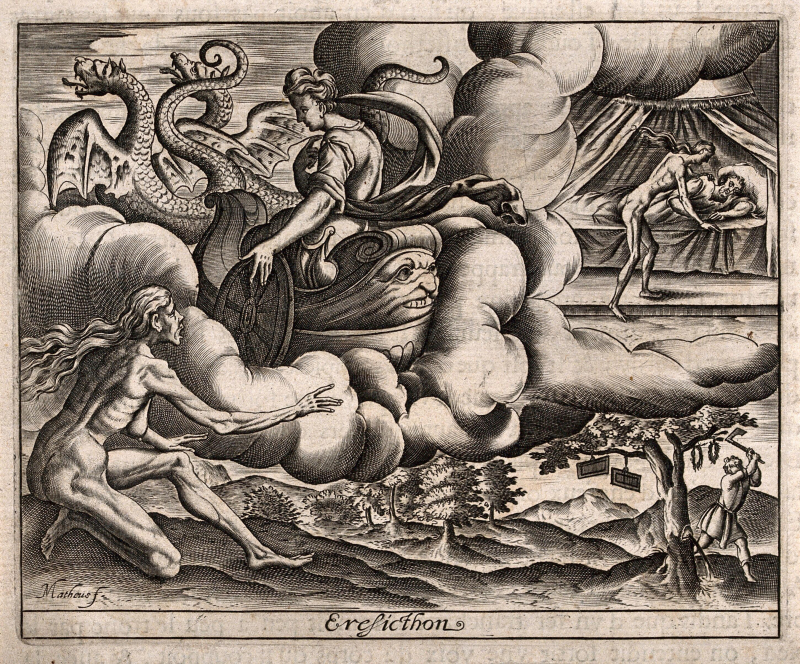
Photo: https://wellcomecollection.org/ -
The Greek geographer Pausanias explains the myth of Demeter's rape by Poseidon in his account of Greece. He claimed that while Demeter was traveling the earth in quest of her daughter, Persephone, Poseidon sexually assaulted her.
When Poseidon first saw Demeter, he was captivated by her beauty. Demeter learned about it and posed as a mare to flee from the man. She was raped by Poseidon, who had disguised himself as a stallion, so she was unable to flee.
Areion, an eternal horse, was said to have been born of Demeter. Another child of Demeter and Poseidon was named Despoina. She was revered alongside her mother Demeter as the goddess of secrets in Arcadian religions.
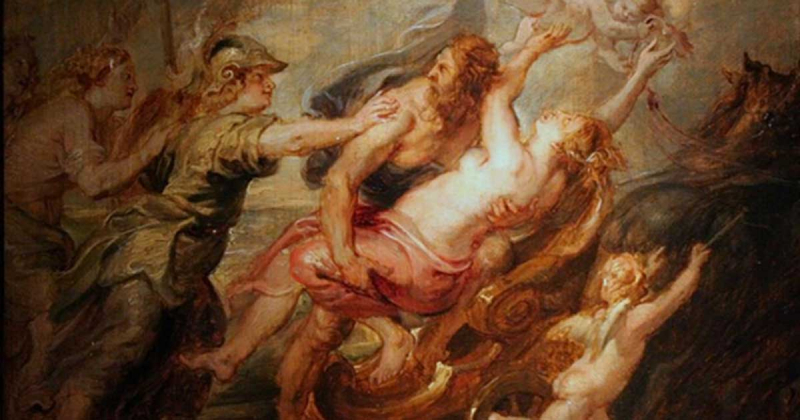
Photo: https://www.ancient-origins.net/ 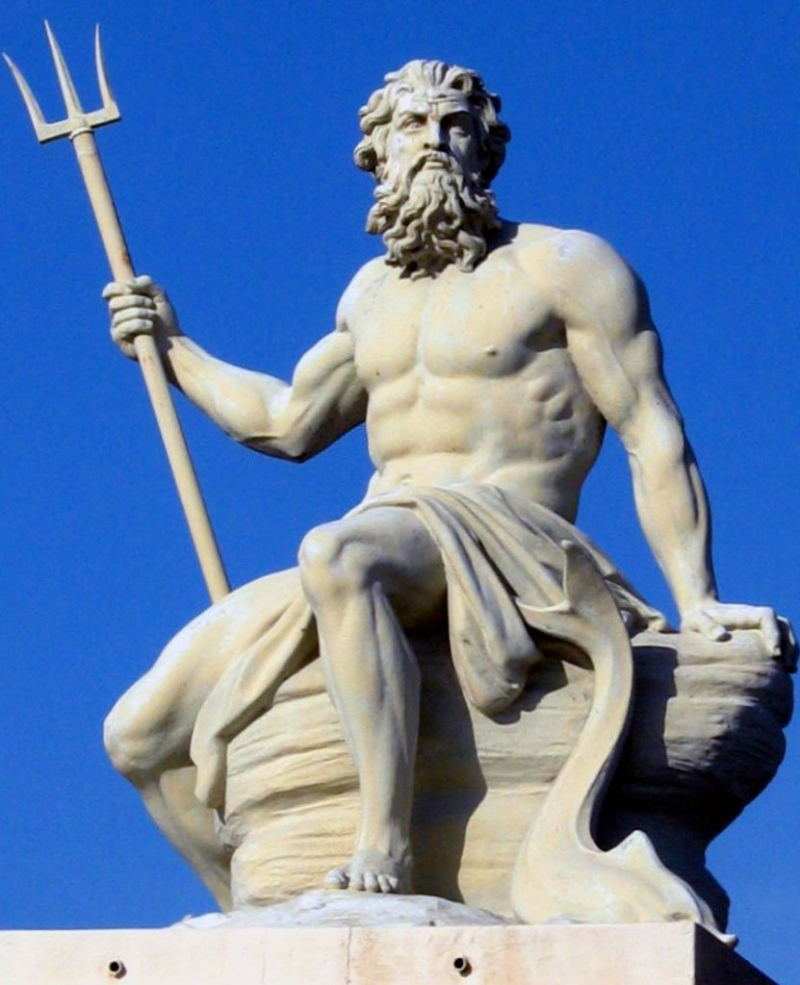
Poseidon - Photo: https://www.greekmythology.com/ -
One of the most fascinating myths about ancient Greece is the story of Demeter punishing Erysichthon, King of Thessaly. The tradition started when Erysichthon gave his soldiers the order to remove every tree from Demeter's sacred groves.
While felling the trees, the Erysichthon's soldiers watch the great sacred oak draped in votive wreaths. They refused to cut the trees down because they represented Demeter's answers to prayers. Erysichthon, however, climbs on to slash those trees and, in the process, kills a dryad nymph. The nymph and Demeter both curse the King. Even after eating, he would constantly feel hungry since Demeter had Limos plant a constant, insatiable hunger in him.
Erysichthon grew more ravenous as he consumed more food. Mestra, the obedient daughter of Erysichthon, was born. To buy food, the king sold all of his riches, but the hunger persisted. He sold his daughter, Mestra, into slavery for food when there was nothing else to sell. But Poseidon, her old lover, set her free and gave her the power to change forms. Mestra may so transform into any beast to free herself from her chains. Her power to change shapes allowed the king to routinely trade her for food. However, no quantity of food was sufficient for him, and Erysichthon eventually ate himself to death.
Source: https://www.youtube.com/ 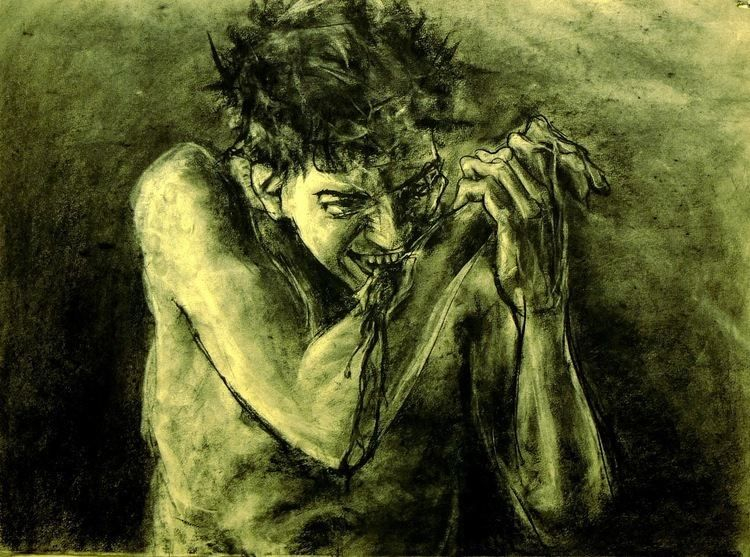
Photo: https://guu.vn/ -
An annual celebration known as Thesmophoria was celebrated in honor of Demeter and her daughter Persephone in ancient Greece. The celebration used to occur primarily in late autumn, around the time of seed sowing. It praised both agricultural and human fertility. Men were not permitted to take part in any of the rites or rituals performed at Thesmophoria; only adult females were permitted. These ceremonies and rites were therefore kept a secret.
Scarifying the pig's women was one of the festival's most well-known rites. The corpses were then placed within Megara's pits to begin the process of decomposition. Finally, to assure a successful crop, the decaying remains were dispersed across fields before seeds were seeded. Three days of Thesmophoria were held in Athens. Anodos ("ascent"), Nesteia ("abstinence"), and Kalligeneia ("beautiful birth") were the names of these days. One of the most significant and well-known celebrations in ancient Greece was theophoric. Demeter is also known as Thesmophoros (the "giver of customs") about the event.
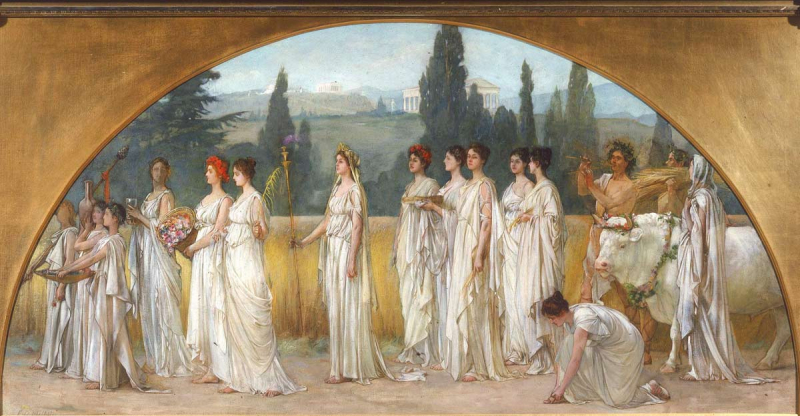
Photo: https://commonera.com/ 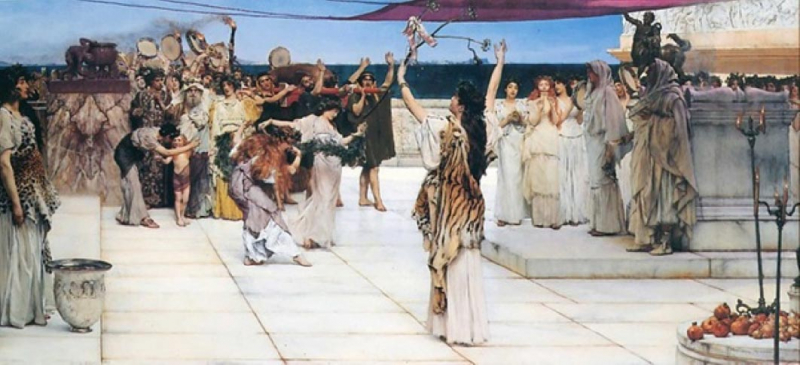
Photo: https://femminaclassica.com/ -
Ceres is regarded as the goddess of agriculture, grain crops, fertility, and maternal bonds in Roman mythology. She was credited with imparting the knowledge necessary for mankind to cultivate, preserve, and cook grain and maize. She also could reproduce, fertilize, and fructify animals and plant seeds. Because of this, Ceres is viewed as Demeter's polar opposite in Greek mythology.
The mythology surrounding Demeter is reinterpreted in Roman art and literature with Ceres taking on her persona. Around 205 BC, the formal fusion of Demeter and Ceres worship took place. Ceres was one of the Dii Consentes, the twelve principal goddesses of the Roman pantheon, just as Demeter was one of the twelve Olympian Gods. Furthermore, Ceres was celebrated by a significant Roman celebration called Cerealia, just as Demeter was honored by the Thesmophoria festival.
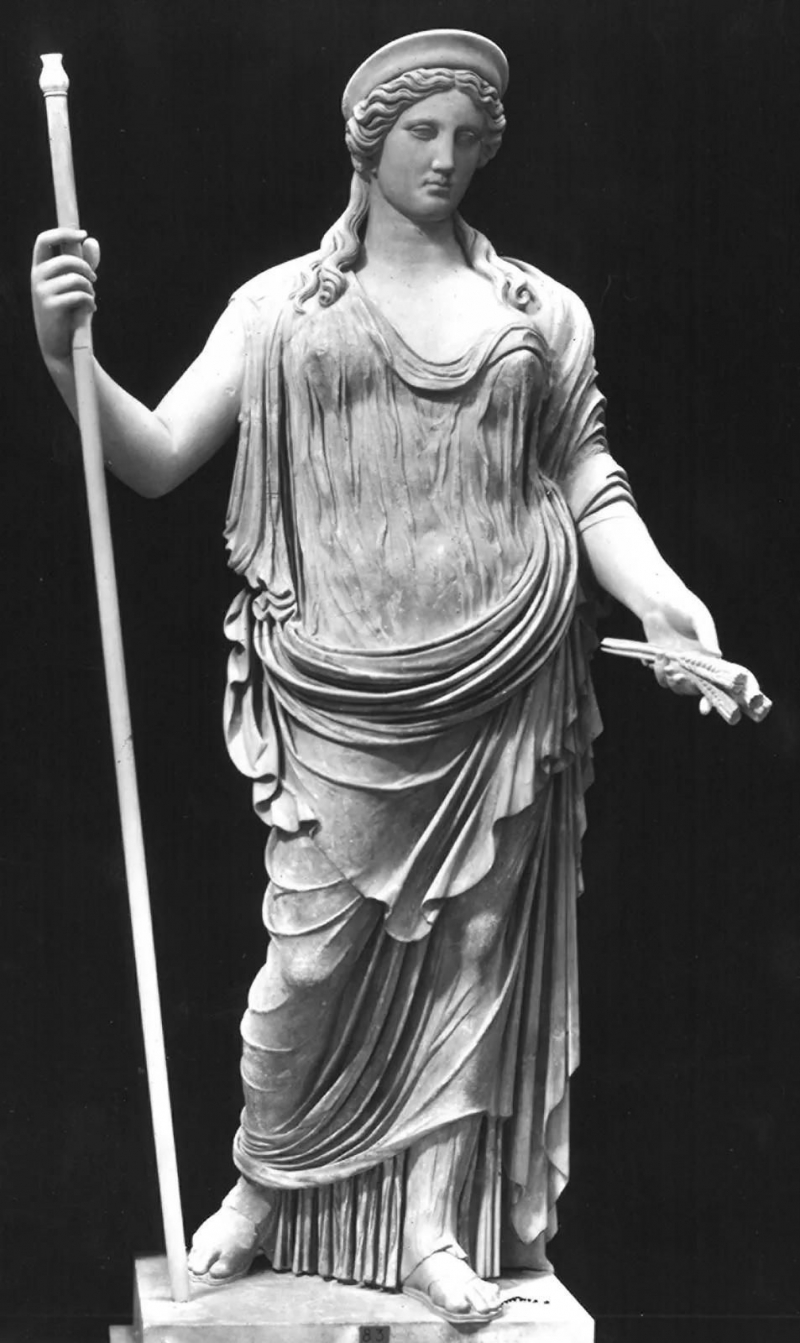
Ceres - Photo: https://delphipages.live/ 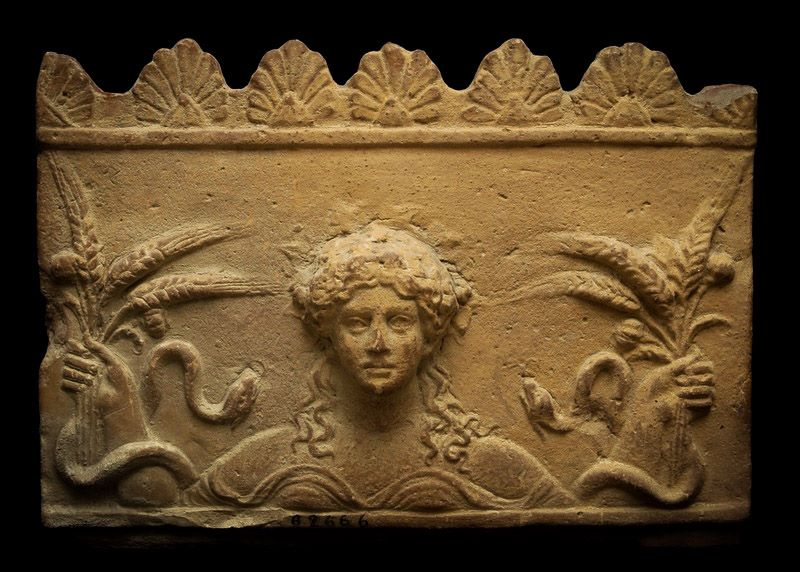
Photo: https://twitter.com/ -
The most significant Demeter myth is the disappearance and reappearance of her daughter Persephone, and as a result, Demeter is frequently seen with or looking for her. Greek pottery as early as the sixth century BCE depicts Demeter. According to the legend that she is looking for her daughter, she is frequently depicted robed and occasionally holding a torch. Demeter is frequently shown in post-classical artwork as an allegory for the earth's fertility. Jacob Jordaens' 1620 painting Offering to Ceres and Jean Arp's 1960 sculpture Demeter are two examples of such representations.
Similar to this, Demeter is portrayed in popular culture as a significant deity to humans who is in charge of agricultural productivity and regulates seasonal variations. Demeter is depicted as clutching onto three stalks of wheat and seated on the horn of abundance, a hollow horn loaded with endless gifts of festive fruit, in the figure Plenty on the Great Seal of North Carolina. On May 31, 1929, German astronomer Karl Reinmuth discovered an asteroid that would later be known as 1108 Demeter.
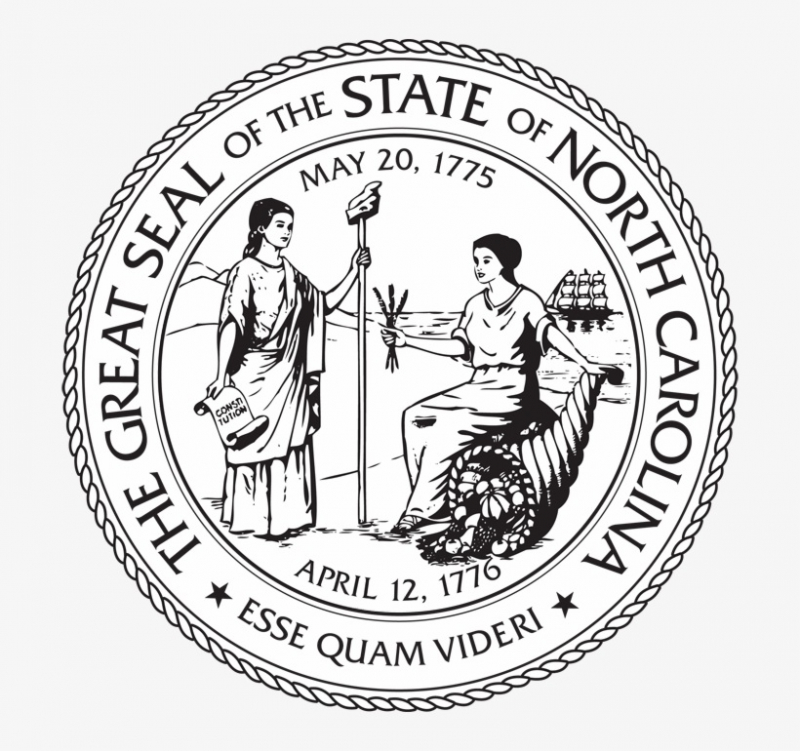
Photo: https://www.seekpng.com/ 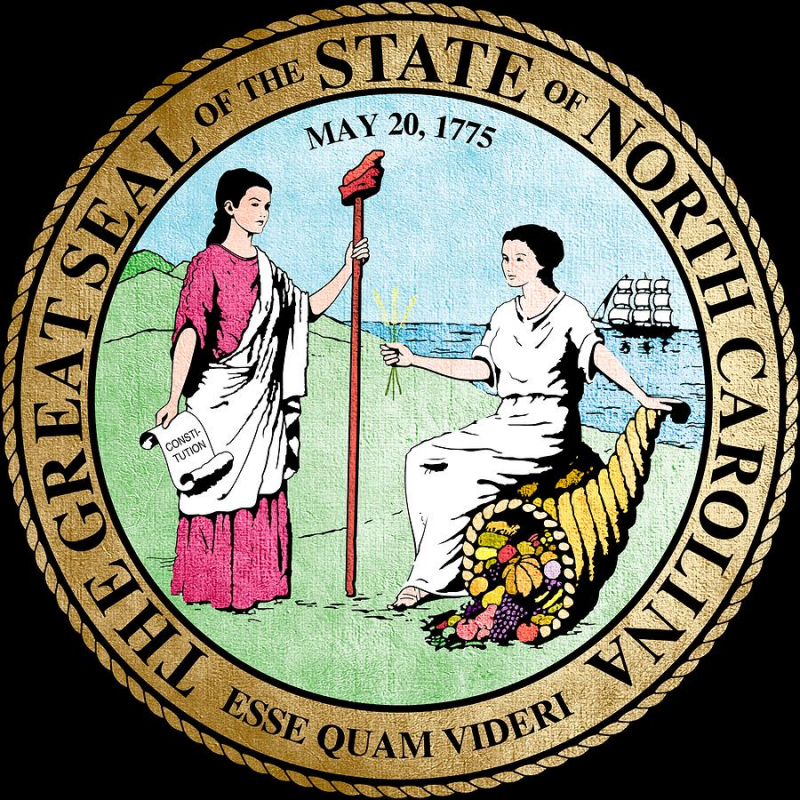
Photo: https://pixels.com/ -
There are numerous instances of Demeter supporting people in the past. Demeter's service to Celeus, King of Eleusis in Attica, is described in the Homeric hymns to her.
Demeter came to the palace to nurse Demophon and Triptolemus while she was off roaming in quest of her daughter. The older woman there was Demeter, and the king gave her a cordial greeting. In exchange for the King's favor, she made the older prince, Demophon, immortal. One night, the prince was taken on a fiery fire by Demeter, who forced him to drink ambrosia (divine nectar) and burn his mortal soul.
Demeter was forced to abandon her plan when the queen Metanira shouted aloud when she saw her son engulfed in flames. Demeter then decided to impart to Triptolemus, the younger prince, the knowledge of agriculture. Triptolemus pledged to teach anyone interested in learning the mysteries of agriculture after he had finished studying it with Demeter. That is how humans first became accustomed to agriculture. This story is known as one of the most interesting facts about Demeter.
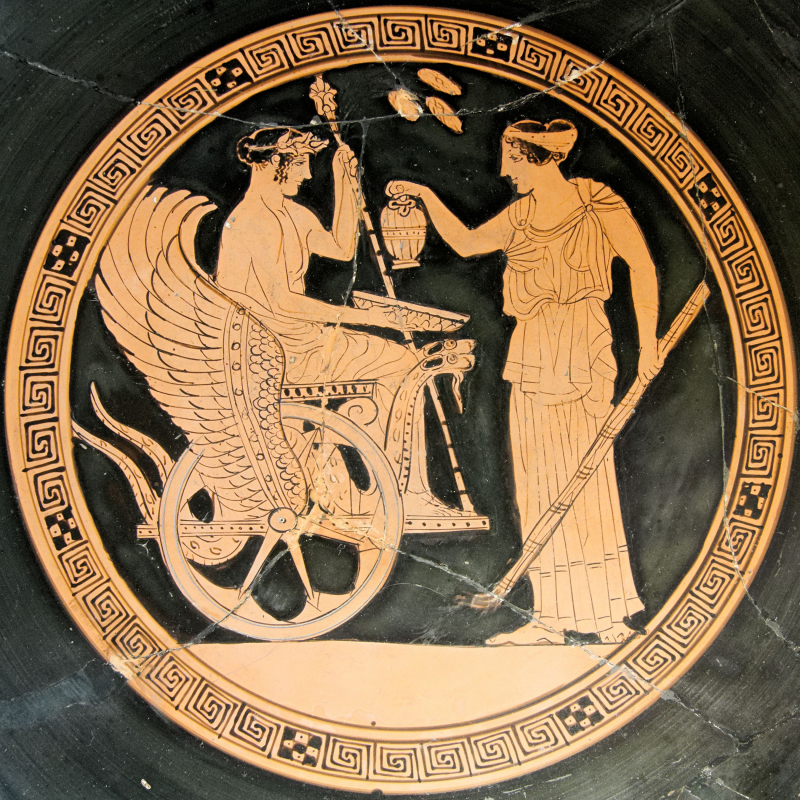
Photo: https://novoscriptorium.com/ 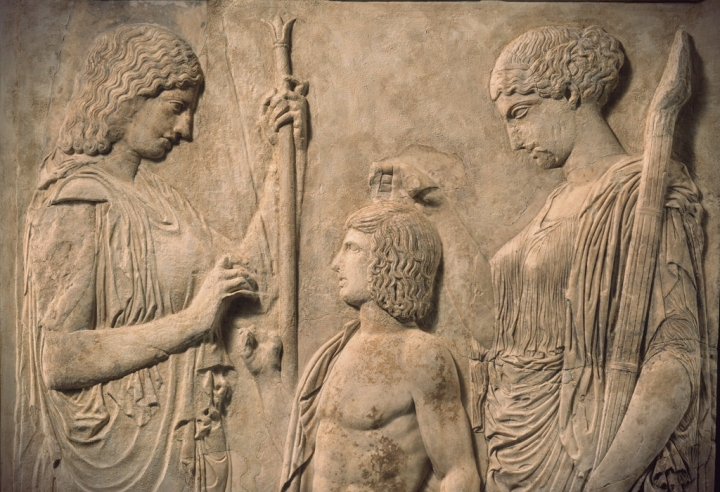
Photo: https://greeking.me/


































